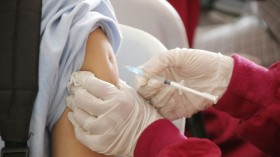We've already seen volcano diving daredevils, go-pros and drones, but what about robots which can get the job done all the time? Researchers at NASA's Jet Propulsion Laboratory (JPL) are working to make this a reality, potentially opening up new opportunities for otherwise risky geological research.
Carolyn Parcheta, a postdoctoral fellow based at the JPL, has always been facinated by volcanoes, dreaming of one day directly studying these awe-inspiring wonders ever since she saw experts taking lava samples on television in the 6th grade.
After learning how little we actually know about volcanoes in the later years, the scientist became only more determined to get to the bottom of things... quite literally.
"We don't know exactly how volcanoes erupt. We have models but they are all very, very simplified. This project aims to help make those models more realistic," Parcheta recently said in a NASA statement.
The project she is talking about boasts the simple name "volcanobot" and involves the development of robots that can get into crevices where humans wouldn't be able to go. This could allow volcanoes to be studied more extensively, replacing work that would otherwise be left to hypotheticals or far more indirect methods.
The first practical version, Volcanobot1, was derived from the JPL's Durable Reconnaissance and Observation Platform (DROP). It was tested last May, when Parcheta and her colleagues rolled it down a volcanic fissure (one that is now inactive) on the active Kilauea volcano in Hawaii.
The robot explored this fissure for four days, mapping the pathways magma once took to create this incredibly well-preserved formation. Eventually, the fissure grew too tight even for the robot, but researchers hope to return to the spot in the near future with Volcanobot2 - a smaller and lighter rendition of the original, to continue their investigation.
The JPL team admitted that they were surprised that the fissure continues as far as it does, showing how little experts actually know of volcanic behavior. They plan to return with Volcanobot2 this March.
For more great nature science stories and general news, please visit our sister site, Headlines and Global News (HNGN).
© 2024 NatureWorldNews.com All rights reserved. Do not reproduce without permission.




